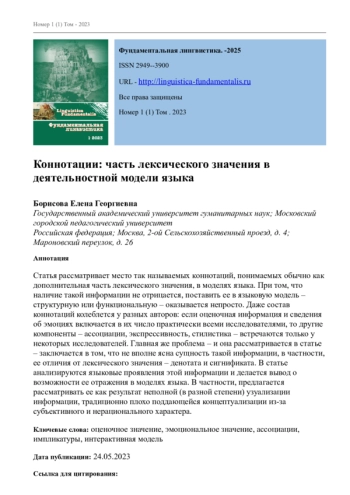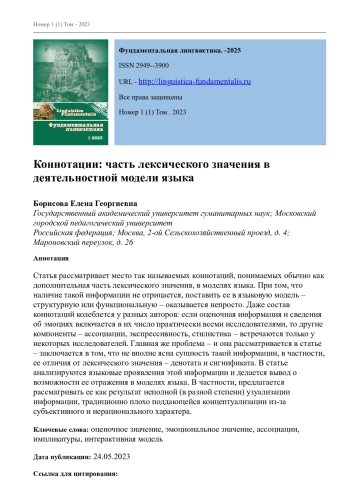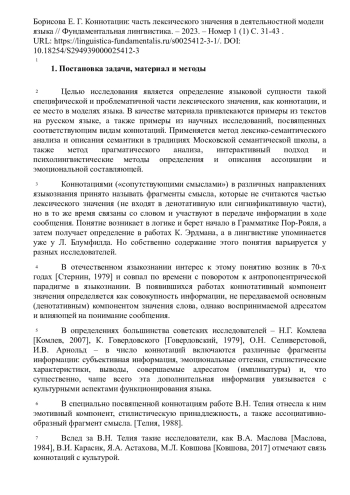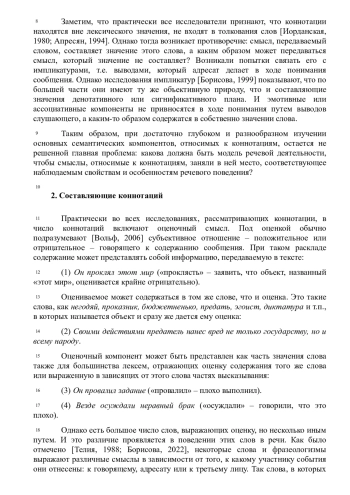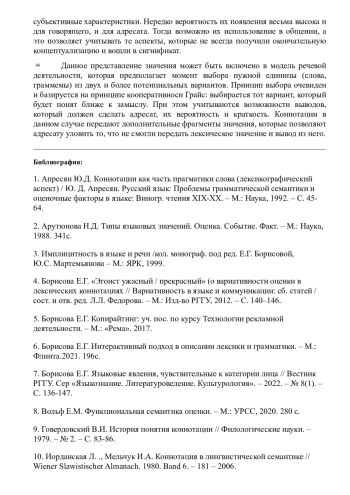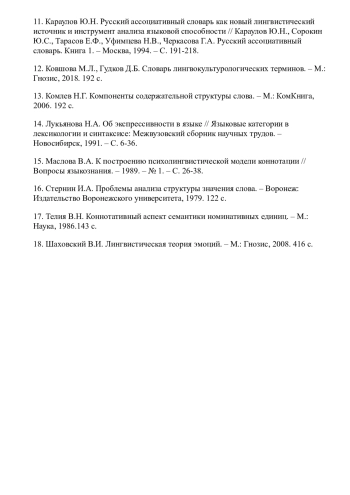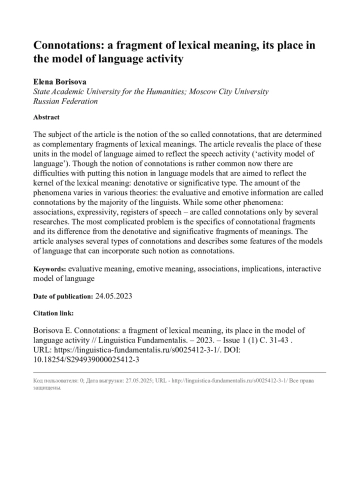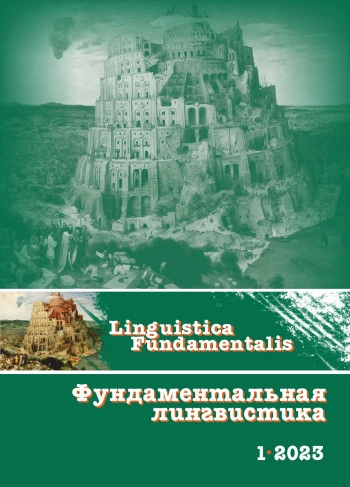Статья рассматривает место так называемых коннотаций, понимаемых обычно как дополнительная часть лексического значения, в моделях языка. При том, что наличие такой информации не отрицается, поставить ее в языковую модель - структурную или функциональную - оказывается непросто. Даже состав коннотаций колеблется у разных авторов: если оценочная информация и сведения об эмоциях включается в их число практически всеми исследователями, то другие компоненты - ассоциации, экспрессивность, стилистика - встречаются только у некоторых исследователей. Главная же проблема - и она рассматривается в статье - заключается в том, что не вполне ясна сущность такой информации, в частности, ее отличия от лексического значения - денотата и сигнификата. В статье анализируются языковые проявления этой информации и делается вывод о возможности ее отражения в моделях языка. В частности, предлагается рассматривать ее как результат неполной (в разной степени) узуализации информации, традиционно плохо поддающейся концептуализации из-за субъективного и нерационального характера.
The subject of the article is the notion of the so called connotations, that are determined as complementary fragments of lexical meanings. The article revealis the place of these units in the model of language aimed to reflect the speech activity (‘activity model of language’). Though the notion of connotations is rather common now there are difficulties with putting this notion in language models that are aimed to reflect the kernel of the lexical meaning: denotative or significative type. The amount of the phenomena varies in various theories: the evaluative and emotive information are called connotations by the majority of the linguists. While some other phenomena: associations, expressivity, registers of speech - are called connotations only by several researches. The most complicated problem is the specifics of connotational fragments and its difference from the denotative and significative fragments of meanings. The article analyses several types of connotations and describes some features of the models of language that can incorporate such notion as connotations.
